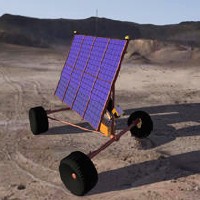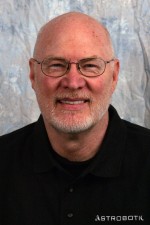The objective of this research is to discover, express, and exhibit the importance of reasoning about sunlight as it pertains to robotic exploration.
Displaying 11 Publications
2005
Journal Article, International Journal of Robotics Research, Vol. 24, No. 1, pp. 3 - 30, 2005
2004
Conference Paper, Proceedings of (IROS) IEEE/RSJ International Conference on Intelligent Robots and Systems, Vol. 4, pp. 4007 - 4012, September, 2004
2002
Conference Paper, Proceedings of (IROS) IEEE/RSJ International Conference on Intelligent Robots and Systems, Vol. 1, pp. 805 - 810, September, 2002
Conference Paper, Proceedings of (ICRA) International Conference on Robotics and Automation, Vol. 4, pp. 3501 - 3507, May, 2002
Conference Paper, Proceedings of (ICRA) International Conference on Robotics and Automation, Vol. 4, pp. 3493 - 3500, May, 2002
2001
Conference Paper, Proceedings of SPIE Sensor Fusion and Decentralized Control in Robotic Systems IV, Vol. 4571, pp. 96 - 107, October, 2001
Conference Paper, Proceedings of 6th International Symposium on Artificial Intelligence, Robotics and Automation in Space (iSAIRAS '01), June, 2001
Conference Paper, Proceedings of 6th International Symposium on Artificial Intelligence, Robotics and Automation in Space (iSAIRAS '01), June, 2001
Conference Paper, Proceedings of 6th International Symposium on Artificial Intelligence, Robotics and Automation in Space (iSAIRAS '01), June, 2001
Conference Paper, Proceedings of 6th International Symposium on Artificial Intelligence, Robotics and Automation in Space (iSAIRAS '01), June, 2001
current head
current contact
past staff
- Michael D Wagner
- David D Wilkinson




